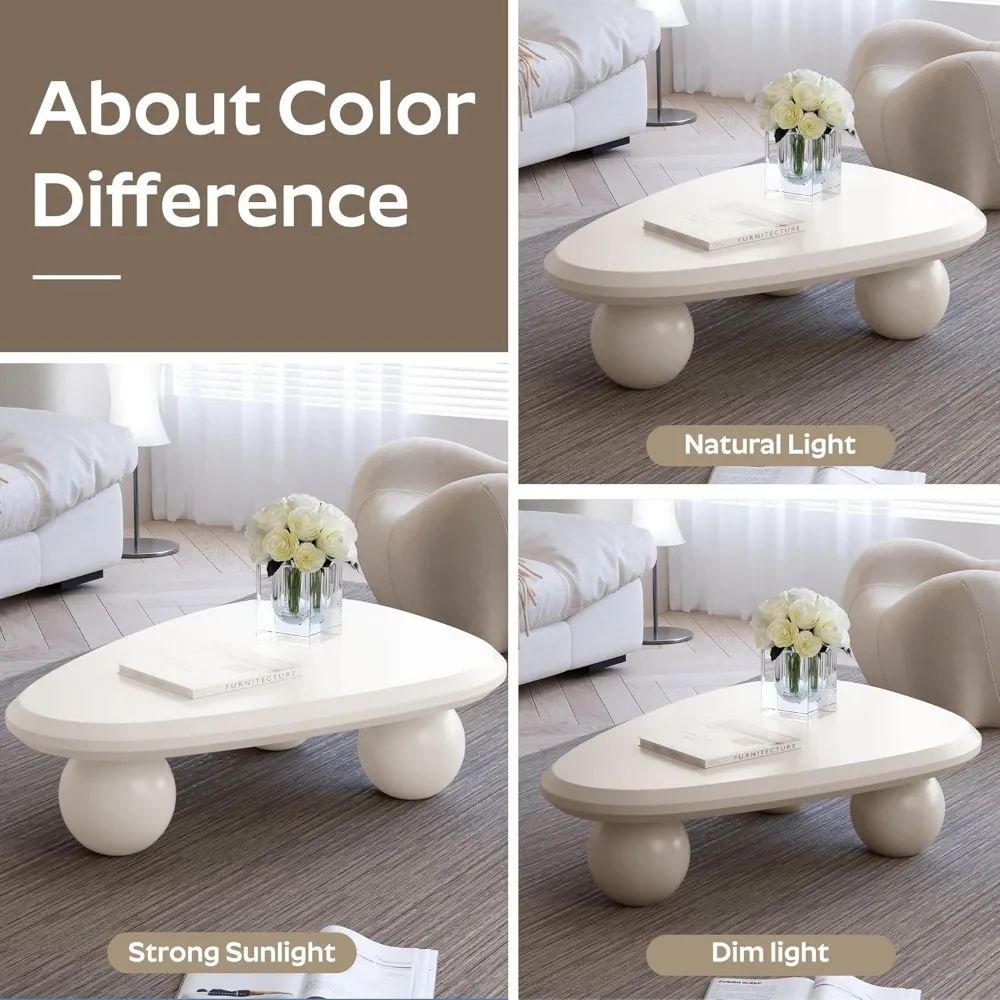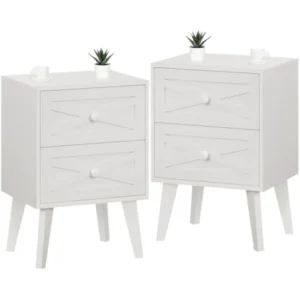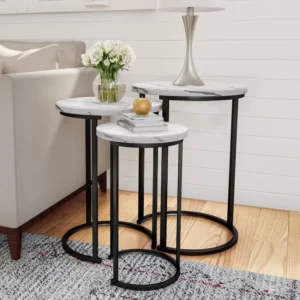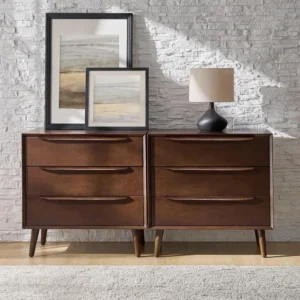Understanding Coffee Tables: Function, Design, and Purpose
A coffee table is a low table designed specifically to be placed in front of or between seating arrangements in living spaces. This versatile piece of furniture serves as both a functional surface and a stylistic anchor that ties a room together. Beyond its basic purpose of providing a convenient place for beverages and small items, a coffee table creates a natural gathering point that enhances social interaction and completes the layout of a living area.
The modern coffee table has evolved from simple utility to become an essential component of interior design. Studies show that over 85% of living rooms in American homes feature some form of coffee table, highlighting their status as a furniture staple. What began as a functional surface for serving coffee in the early 20th century has transformed into a multifaceted furniture piece that balances practicality with aesthetic appeal.
Coffee tables play several crucial roles simultaneously: they provide a convenient surface for everyday items, create visual balance in seating arrangements, and often serve as the centerpiece that defines a room’s character. The most effective coffee tables seamlessly integrate these functional and decorative aspects, enhancing how we experience our living spaces daily.
At Hearth Forms, we understand that coffee tables represent the intersection of form and function. Our expertise in functional lift-top coffee tables informs how we view these essential pieces—not merely as tables, but as functional art that transforms living spaces. The defining characteristics of coffee tables extend far beyond their basic appearance, encompassing height, placement, materials, and many other elements we’ll explore.
As we delve deeper into what truly defines a coffee table, you’ll discover why these seemingly simple pieces deserve careful consideration when designing your living space. Our mid-century modern coffee tables exemplify how thoughtfully designed tables can elevate an entire room while fulfilling practical everyday needs.
The Essential Characteristics of Coffee Tables
Height: The Defining Dimension
Perhaps the single most defining feature of a coffee table is its height. Coffee tables typically range from 14 to 20 inches (35 to 50 cm) tall, making them distinctly lower than most other tables in the home. This specific height range isn’t arbitrary—it’s carefully calculated to create an ergonomic relationship with seating furniture.
The ideal coffee table sits at the same height as the sofa cushions or 1-2 inches lower. This height relationship serves a practical purpose: it allows people to easily reach items on the table surface from a seated position without stretching or straining. When a coffee table is properly proportioned, someone seated can comfortably rest their arm on it or pick up a beverage without awkward movements.
This purposeful low profile is what distinguishes coffee tables from other table types and is the primary reason they function so well in conversation areas. The ergonomic principles behind elevating everyday living with lift-top coffee tables demonstrate how even small height adjustments can dramatically impact functionality and comfort in daily use.
Placement: The Centerpiece Position
Coffee tables are defined not only by their dimensions but also by their strategic placement within a room. Typically positioned in front of a sofa or between multiple seating elements, they serve as connective pieces that unify separate seating arrangements into a cohesive conversation area.
The standard distance between a coffee table and surrounding seating is 12 to 18 inches (30 to 45 cm). This spacing is carefully calculated to allow comfortable leg room while keeping the surface within easy reach. The table should be accessible from all seats without requiring people to stand up, yet provide enough clearance for movement around the seating area.
This central positioning transforms coffee tables into natural focal points that anchor the entire seating arrangement. Unlike other occasional tables that support specific seats, coffee tables serve the entire conversation area collectively. Many rectangular coffee tables are designed specifically to accommodate this central placement by providing balanced access from multiple seating positions.
Size and Proportion: Finding Balance
The overall dimensions of a coffee table significantly impact both its functionality and visual harmony within a space. Professional designers often follow the two-thirds rule: the ideal coffee table length should be approximately two-thirds the length of the sofa it accompanies. This proportion creates visual balance while providing adequate surface area.
When selecting a coffee table, consider these guidelines for proper scaling:
– Width should allow for 18-24 inches (45-60 cm) of walkway space around all sides
– Length should be accessible from all seating positions
– Surface area should be sufficient for intended use without overwhelming the space
Room size naturally influences appropriate dimensions—larger rooms can accommodate more substantial tables, while compact spaces benefit from smaller profiles or nesting options. The relationship between table size and room scale is fundamental to creating both visual harmony and practical functionality in living areas.
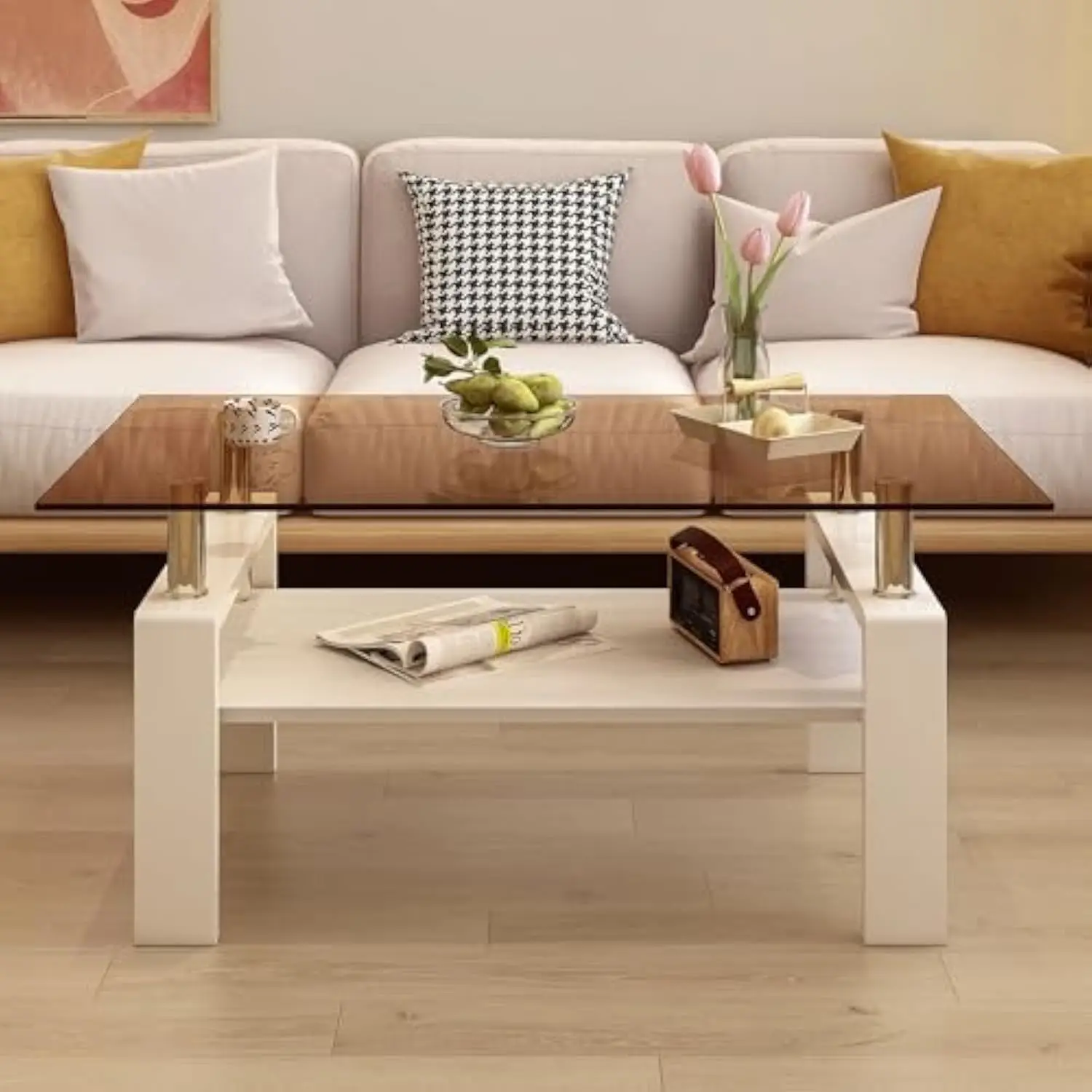
The proportional balance of round coffee tables offers a different approach to space utilization, often working better in tighter areas or with unconventional seating arrangements where a rectangular shape might create awkward angles.
Coffee Table Shapes and Their Functional Impact
The shape of a coffee table does far more than simply define its appearance—it directly influences traffic flow, accessibility, and how the piece interacts with surrounding furniture. Each shape offers distinct advantages for different room layouts and living patterns.
Rectangular coffee tables represent the most popular choice, accounting for approximately 60% of all coffee tables. Their linear form parallels the typical sofa shape, creating natural alignment and maximizing usable surface area. Rectangular tables work particularly well with traditional seating arrangements where the sofa forms the dominant anchor piece.
Round coffee tables eliminate sharp corners, making them ideal for:
– Homes with small children or elderly residents
– Tight spaces where traffic flow might be constricted
– Creating softer visual contrast in rooms with many linear elements
– Encouraging more democratic conversation as the shape has no “head” position
Square coffee tables offer symmetrical proportions that pair beautifully with sectional arrangements or furniture groupings that form a square. Their balanced dimensions create a strong geometric presence that can anchor a room with visual stability.
Oval tables combine the safety benefits of rounded edges with the practical surface area of rectangular designs. This hybrid approach works particularly well in transitional spaces or rooms where the flow between different areas needs to remain open.
When choosing the perfect coffee table, shape consideration should extend beyond mere aesthetics to address how people actually move around and use the space. The right shape facilitates natural movement patterns while the wrong one can create obstacles or unused areas.
Our collection of square coffee tables demonstrates how this particular shape can create a strong geometric presence while providing balanced access from all sides of a conversation area.
Materials and Construction: What Coffee Tables Are Made Of
The materials used in coffee table construction fundamentally influence its durability, maintenance requirements, weight, and visual impression. Different materials convey distinct design sensibilities while offering varying practical benefits.
Wood: Timeless and Versatile
Wood remains the most popular coffee table material, prized for its warmth, natural beauty, and versatility. Hardwoods like oak, walnut, maple, and cherry offer exceptional durability with unique grain patterns that create visual interest. Engineered woods provide more affordable alternatives while still offering reasonable durability when properly constructed.
Wood coffee tables typically require moderate maintenance—regular dusting and occasional polishing—but can last generations when properly cared for. Their natural variations in color and grain make each piece somewhat unique, especially in solid wood constructions.
Glass: Contemporary Elegance
Glass tops create a sense of visual lightness that helps small spaces feel more open. Typically constructed of tempered safety glass that resists breaking, these surfaces offer excellent durability against stains and moisture damage. Glass often pairs with other materials like wood, metal, or stone to create mixed-media designs with interesting textural contrasts.
While glass requires frequent cleaning to maintain its transparent beauty, it offers unmatched resistance to water rings and heat damage. Our glass top coffee tables showcase how this material can create sophisticated centerpieces that reflect light and create an airy feeling in living spaces.
Metal: Industrial Strength and Precision
Metal components—whether as structural frames or complete surfaces—bring precision, strength, and industrial character to coffee tables. Stainless steel, aluminum, brass, and iron each contribute distinct aesthetic qualities from sleek modernism to vintage industrial charm.
Metal offers exceptional strength-to-weight ratios, allowing for designs with slender profiles that would be impossible in wood. These materials generally require minimal maintenance beyond occasional dusting, though some finishes may need specific care to prevent tarnishing or corrosion.
Understanding the most durable material for coffee tables helps consumers make informed choices based on their specific lifestyle needs and maintenance preferences.

Design and Aesthetic Roles: Beyond Function
Coffee tables often serve as visual anchors that define a room’s character and style direction. Their prominent central placement makes them natural focal points that can either complement existing design elements or provide deliberate contrast to create visual interest.
Different design aesthetics approach coffee tables with distinct philosophies:
- Mid-century modern designs emphasize clean lines, organic shapes, and visible wood grain with tapered legs and minimal ornamentation
- Industrial styles feature raw materials, exposed hardware, and utilitarian forms that celebrate structural elements
- Traditional designs incorporate detailed craftsmanship, ornate elements, and formal proportions that convey classic elegance
- Contemporary approaches focus on unexpected material combinations, bold geometric forms, and innovative manufacturing techniques
The principles of mid-century modern table design have proven remarkably enduring, featuring natural materials and timeless proportions that continue to influence furniture design decades after their introduction. This design philosophy prioritizes both visual harmony and practical functionality—a balance that defines truly successful coffee tables.
As both functional surfaces and statement pieces, coffee tables occupy a unique position in interior design. Their visual impact extends beyond their physical dimensions, influencing how the entire room is perceived and experienced. Our solid wood coffee tables exemplify how natural materials can create both visual warmth and lasting durability in centerpiece furniture.
Functional Features: Storage and Versatility
Modern coffee tables often incorporate additional functions beyond their basic surface utility, addressing specific lifestyle needs and space limitations. These enhanced capabilities transform simple tables into multifunctional solutions that adapt to changing requirements.
Storage-focused designs address common living room organization challenges through:
– Drawers for containing small items like remote controls and gaming controllers
– Shelves for displaying books, magazines, and decorative objects
– Hidden compartments that maintain clean visual lines while concealing everyday clutter
– Lift-top mechanisms that reveal interior storage while creating adjustable work surfaces
Movement and adaptation features add versatility through:
– Height-adjustable mechanisms that transform coffee tables into dining or work surfaces
– Nesting designs that can be expanded for entertaining or compressed for daily use
– Wheeled bases that allow easy repositioning for different activities or cleaning
– Expandable surfaces that accommodate varying numbers of users or different functions
These advanced functions make coffee tables particularly valuable in compact living spaces. Lift-top coffee tables for small spaces demonstrate how thoughtful design can maximize functionality without requiring additional floor space—an increasingly important consideration in urban living environments.
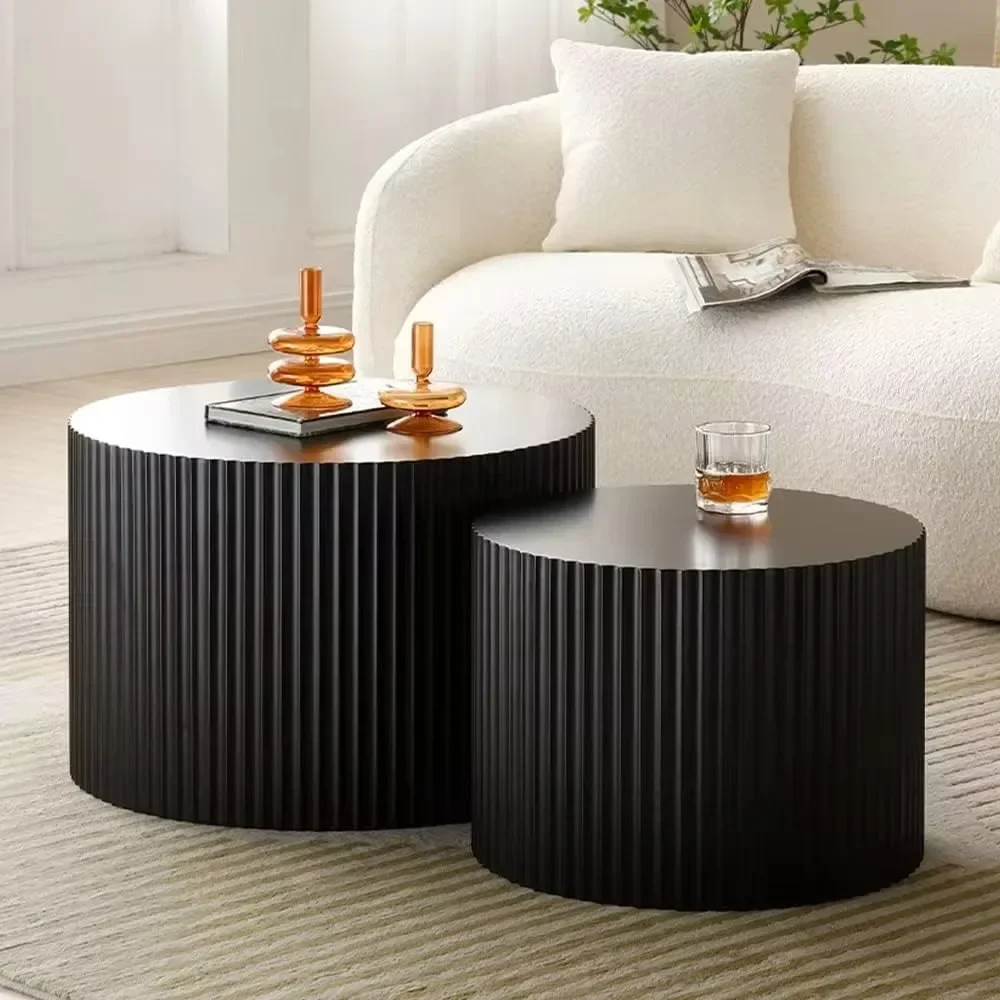
Distinguishing Coffee Tables from Similar Furniture
Coffee tables belong to a family of occasional tables but have specific characteristics that differentiate them from similar furniture pieces. Understanding these distinctions helps clarify what truly defines a coffee table versus other table types.
Coffee Tables vs. Center Tables
While sometimes used interchangeably, center tables traditionally serve as decorative focal points positioned in room centers, often round and purely ornamental. Coffee tables prioritize functionality for seated users and maintain a specific relationship with seating furniture. Center tables typically stand taller (24-30 inches/60-76 cm) and may not directly relate to seating arrangements.
Coffee Tables vs. Tea Tables
Tea tables originated for formal tea service and typically stand 25-27 inches (63-68 cm) tall—significantly higher than coffee tables—to facilitate serving while seated in chairs rather than deeper sofas. Their design often includes features specific to tea service like raised edges or specialized compartments.
Coffee Tables vs. End/Side Tables
End tables and side tables serve individual seats rather than entire conversation areas. They typically stand 20-26 inches (50-66 cm) tall—higher than coffee tables—to align with armrests. Their footprint is substantially smaller, focusing on supporting a single seat rather than the collective arrangement. Our side and end tables demonstrate these height and proportion differences when compared to coffee tables.
Coffee Tables vs. Ottomans
While ottomans can serve similar functions when topped with trays, they differ fundamentally in construction and primary purpose. Ottomans feature padded, upholstered tops designed primarily for seating or footrests, while coffee tables provide rigid, stable surfaces optimized for holding objects.
These distinctions highlight how a coffee table’s specific combination of height, placement, proportion, and surface characteristics defines its identity among occasional furniture.
Choosing the Right Coffee Table: Practical Considerations
Selecting the ideal coffee table requires balancing aesthetic preferences with practical requirements. This decision-making process should consider several key factors to ensure the piece serves your specific needs effectively.
Start by accurately measuring your space, considering:
– Distance between existing seating (allowing for 12-18 inches/30-45 cm of clearance)
– Overall room dimensions and traffic patterns
– Height relationship with surrounding seating (typically equal to or 1-2 inches below cushion height)
Material selection should reflect your lifestyle realities:
– Households with children might prioritize rounded corners and durable surfaces
– Frequently entertained spaces benefit from stain-resistant materials
– Homes with pets should consider scratch-resistant surfaces
Style coordination doesn’t require perfect matching but should maintain cohesive elements:
– Repeat wood tones or metal finishes from other prominent furniture
– Echo design periods or aesthetic philosophies present in the room
– Consider whether the table should blend harmoniously or provide deliberate contrast
Understanding the differences between lift-top and fixed-top coffee tables helps determine which functionality best serves your specific needs and usage patterns.
Mid-Century Modern End Table Sets of 2, Mid-Century Modern Square Side & End Tables, Mid-Century Modern White Side & End Tables
$348.24 Select options This product has multiple variants. The options may be chosen on the product pageMid-Century Modern Solid Wood Coffee Tables, Mid-Century Modern Teak Coffee Tables
$879.95 Select options This product has multiple variants. The options may be chosen on the product pageMid-Century Modern Danish Coffee Tables, Mid-Century Modern Oval Coffee Tables, Mid-Century Modern Solid Wood Coffee Tables
$390.05 Select options This product has multiple variants. The options may be chosen on the product pageMid-Century Modern Nesting Side & End Tables, Mid-Century Modern Nesting Table Sets, Mid-Century Modern Round Side & End Tables
Price range: $239.35 through $273.06 Select options This product has multiple variants. The options may be chosen on the product pageMid-Century Modern End Table Sets of 2, Mid-Century Modern Walnut Side & End Tables
Price range: $978.89 through $1,957.38 Select options This product has multiple variants. The options may be chosen on the product pageMid-Century Modern Coffee & End Table Sets, Mid-Century Modern Coffee Table Sets, Mid-Century Modern Oval Coffee Tables
Price range: $257.48 through $331.04 Select options This product has multiple variants. The options may be chosen on the product page
The Evolving Role of Coffee Tables in Modern Homes
Coffee tables continue to evolve as living patterns and home designs change. Several emerging trends are reshaping how these traditional pieces function in contemporary spaces:
Technology integration has transformed many coffee tables into connectivity hubs featuring:
– Built-in charging stations and power outlets
– Bluetooth speakers and smart home controls
– Climate-controlled compartments for food and beverages
– Interactive surfaces that function as touchscreens or displays
Space optimization has become increasingly important as urban living spaces shrink, leading to:
– Transformable designs that adjust to different functions throughout the day
– Integrated storage that eliminates the need for additional organizational furniture
– Modular components that can be reconfigured for different needs
Sustainability concerns have influenced both materials and manufacturing processes:
– Reclaimed and recycled materials offering environmental benefits with unique character
– Biodegradable or easily recyclable components addressing end-of-life concerns
– Locally sourced materials reducing transportation carbon footprint
These innovations maintain the core defining characteristics of coffee tables while adapting them to contemporary needs. Multi-purpose lift-top coffee tables exemplify how traditional forms can incorporate new functionalities while preserving their essential identity and purpose in living spaces.
Can A Coffee Table Work Without A Sofa?
While traditionally paired with sofas, coffee tables can function effectively in various alternative arrangements. Their defining low height makes them versatile companions to many seating options beyond conventional sofas.
Coffee tables work beautifully with:
– Clustered armchair arrangements, creating intimate conversation areas
– Floor seating like poufs, floor cushions, or low profile loungers
– Window seats or built-in banquettes that need accessible surfaces
– Chaise lounges or daybed arrangements in reading nooks or sunrooms
The essential relationship isn’t specifically to sofas but rather to seated users who benefit from the table’s accessible height. Any seating that positions users at a compatible height can successfully pair with a coffee table.
In some design approaches, coffee tables even function in non-living spaces like:
– Bedroom reading corners paired with upholstered chairs
– Home office break areas with casual seating
– Covered outdoor living spaces with weather-appropriate seating
When conventional coffee tables don’t suit unique spaces, exploring small space coffee table alternatives can provide solutions that maintain the functional essence while adapting to spatial constraints.
How Do Coffee Tables Differ Around the World?
Coffee tables reflect cultural practices and design traditions worldwide, with fascinating variations that maintain the essential characteristics while adapting to regional preferences.
In Japan, the chabudai and kotatsu represent indigenous low table forms that pre-date Western coffee tables yet serve similar functions. These traditional tables stand just 12 inches (30 cm) high or less, accommodating floor seating customs. The kotatsu uniquely incorporates heating elements beneath its surface—a functional adaptation to homes without central heating.
Middle Eastern and North African cultures have long traditions of low tables for communal dining and tea service. These elaborately decorated pieces often feature intricate inlay work, metallic accents, and geometric patterns that reflect regional artistic traditions while maintaining the functional low profile essential to coffee tables.
Scandinavian design has profoundly influenced modern coffee table aesthetics globally, emphasizing clean lines, natural materials, and functional simplicity. This design philosophy prioritizes honest construction techniques that reveal rather than conceal how pieces are made—an approach that continues to define quality coffee tables worldwide.
While height, proportion, and placement remain relatively consistent globally, cultural adaptations demonstrate how the essential concept of an accessible surface for seated users transcends specific cultural contexts.
Are Coffee and Cocktail Tables Actually the Same Thing?
The terms “coffee table” and “cocktail table” are essentially interchangeable in contemporary usage, though they originated from different historical contexts. The distinction has more to do with terminology evolution than with actual differences in the furniture pieces themselves.
“Coffee table” emerged in the early 20th century as coffee consumption became a casual social activity in living spaces. The term “cocktail table” gained popularity during the mid-century entertaining boom, particularly in the 1950s and 1960s, reflecting the social drinking culture of the era.
Today, furniture manufacturers and retailers use both terms to describe identical pieces. Regional preferences exist—“cocktail table” remains somewhat more common in southern United States regions and in formal interior design contexts, while “coffee table” predominates in everyday usage.
Despite the different names, the defining characteristics remain constant: low height relative to seating, central placement in conversation areas, and a primary function of providing an accessible surface for seated users. This consistency of form and function confirms that regardless of terminology, these essential living room pieces serve the same fundamental purpose in our homes.

